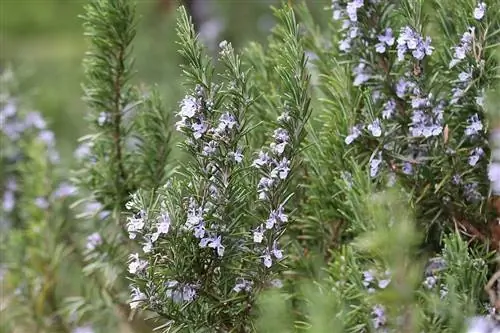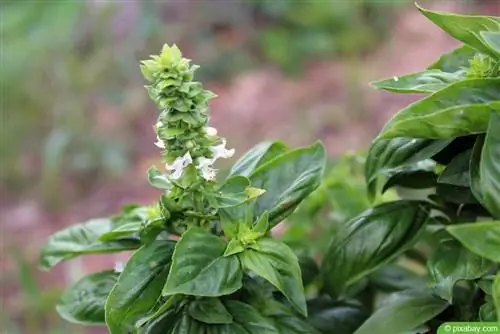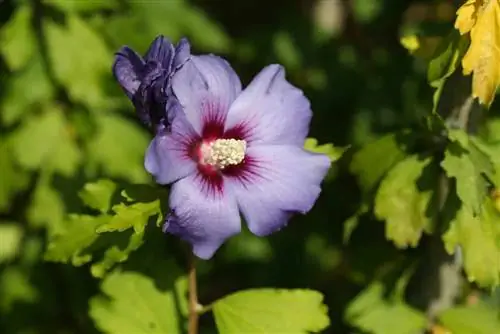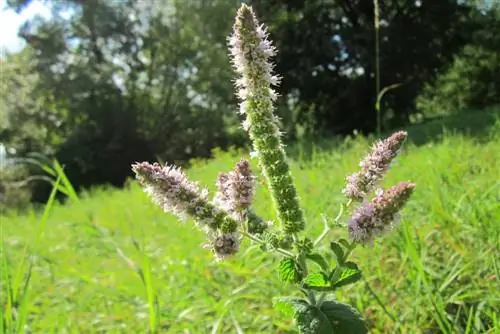- Author admin [email protected].
- Public 2023-12-17 03:39.
- Last modified 2025-01-24 12:45.
Initially no more than an inconspicuous herbaceous plant, dill becomes a real beauty when it produces flowers and decorates the garden or balcony with summery color. Flowers often give culinary herbs an extremely bitter taste. Some even become poisonous and can no longer be eaten. Is dill one of these garden herbs or is it edible despite the flower?
Blooming dill edible?
Many herbs become inedible when they begin to bloom. This is not the case with dill (Anethum graveolens) and is therefore edible despite the flower. However, the flower still has an influence on the culinary herb:
- The aroma decreases in the dill tips
- Flowers make the herb drier (more additional required to obtain tasty spice)
- Consistency becomes harder
- Bloom weakens the growth of the plant
Bloom can hardly be avoided
In order for dill to thrive and produce a lot of essential oil, which creates its unique aroma, the plant needs a full sunny location so that many hours of sun fall on it. The disadvantage is that sunlight also promotes flower formation. If the Anethum graveolens were darker, the full aroma would have to be omitted. With full sun, full dill aroma can be expected for at least a few weeks - without full sun, this should be avoided altogether and the plant will not grow luxuriantly. That's why accepting the flower is always the smart decision.
Harvest and flowering time
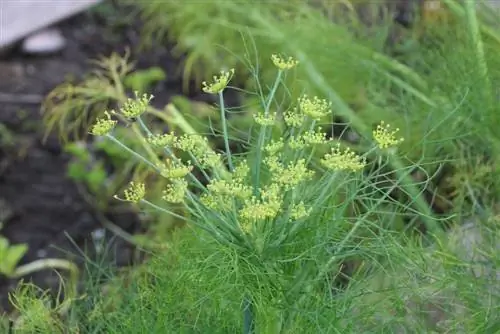
Dill is most aromatic when young, fresh shoots are harvested. The earliest harvest time is between six and eight weeks after sowing/germination. On the other hand, there is the flower, which usually appears in July and August. Since sowing outdoors is only recommended in May after the Ice Saints, there is not much time between the possible harvest date and flower formation. If you only want to harvest the herb, you should start pre-growing indoors at the end of February/beginning of March.
After flowering
Once the flowering period is over, the herb shoots “juice” again and the essential oil and aroma they contain increase. Harvesting can usually take place until the end of September/beginning of October. Dill that was sown late may not bloom until fall. In this case, the harvest of aromatic shoot tips at the beginning of flowering is over, unless you are satisfied with less aromatic dill herb.
Increase dill leaf harvest
If dill is in full sun and in ideal soil conditions, it can grow enormously tall. If you want to harvest plenty of aromatic dill herb, sow it early and proceed as described below:
- Cut tips six weeks after germination
- Cut off entire branches from a branch length of 20 centimeters (promotes new growth)
- Use harvested dill quickly (if cut off, it increasingly loses its aroma)
Tip:
If there is no direct use for freshly harvested dill, it can also be frozen. This way it will last for at least a year without losing its aroma, which is the case when dried.
Flowers and seeds
The flowering opens further doors for self-cultivators, because the flowers and the seeds they contain can also be used. The seeds contain aromatic substances that are very close to those of caraway and aniseed. Salads and sauces can be easily refined with it and tea can be made to combat digestive problems. The taste of the flowers is clearly similar to that of dill. They are suitable as decoration as well as seasoning. They develop their aroma more intensively than dill tips, especially on warm dishes.
Tip:
As soon as the seeds turn brown, it is the ideal time to cut off the entire flower. You shouldn't wait too long, otherwise the seeds will fall off, disappear into the ground or be eaten by animals in the garden.


